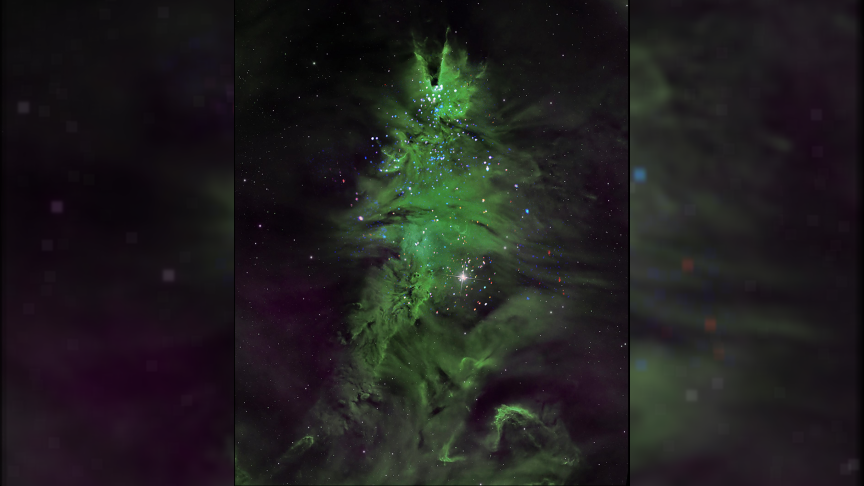
We've all looked for shapes in Earth's clouds. But what about shapes in space clouds? If you glance at NGC 2264, you'll see very quickly why this cluster of stars is nicknamed the "Christmas Tree Cluster."
This cluster has become the recent subject of astrophotographer Michael Clow, who imaged it from Arizona in November. His optical data have been combined with X-ray data from NASA's Chandra X-Ray Observatory to create this beautiful Christmas tree-like image of NGC 2264, showcasing not only the stars themselves, but also the gas clouds between them.
NGC 2264 is located within the Milky Way, just 2,500 light-years from Earth. And the stars within it are very, very young — just one to five million years old. By comparison, our middle-aged sun is about 5 billion years old.
The swirling gas between the young stars in NGC 2264 has been colored green, while the stars themselves are shown in multi-chromatic hues. The result is a very festive scene, if we do say so ourselves. (Last year, NASA created a new composite image of the cluster that even showed the stars twinkling like Christmas lights.)
NASA has also released a second festive image for the holiday season. This one shows NGC 602, a star cluster on the edge of the Small Magellanic Cloud, which looks like a wreath illuminated by Christmas lights. But upon closer inspection, those little lights aren't only stars, but also entire galaxies that are far beyond the star cluster. (The cluster itself is some 200,000 light-years from Earth.)

To create the image, NASA combined data from Chandra and James Webb Space Telescope. The X-ray data from Chandra reveal the young stars within the cluster in red, while the infrared data from Webb show clouds of dust in orange, yellow, green, and blue.







